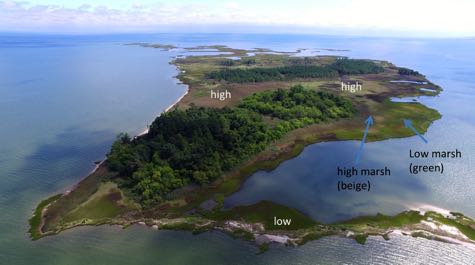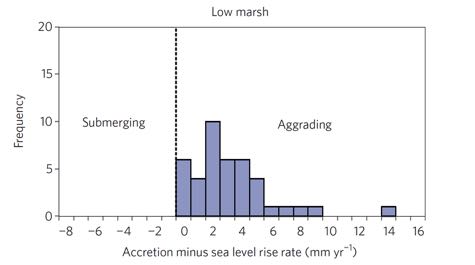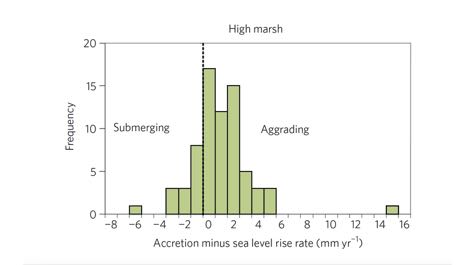Study predicts salt marshes will persist despite rising seas
Study says traditional assessment methods overestimate vulnerability
A new study in Nature Climate Change contends that traditional assessment methods overestimate the vulnerability of salt marshes to sea-level rise because they don’t fully account for processes that allow the marshes to grow vertically and migrate landward as water levels increase.
The persistence of salt marshes despite rising seas would be a rare bit of good news for coastal ecosystems, which are under threat from a host of factors including nutrient pollution, invasive species and development. Healthy marshes buffer coasts from storms, improve water quality, provide habitat for commercial fisheries and help fight global warming by trapping carbon.
Lead author Matt Kirwan, a professor at William & Mary's Virginia Institute of Marine Science, says, “Catastrophic predictions of marsh loss appear alarming, but they stem from simple models that don’t simulate the dynamic feedbacks that allow marshes to adapt not only to present rates of sea-level rise but the accelerated rates predicted for coming decades. Marsh soils actually build much faster as marshes become more flooded.”
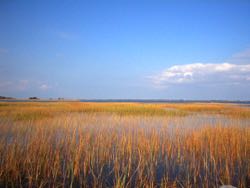 More frequent flooding carries more mud into the marsh and also encourages the growth of several common marsh plants. Together, these processes raise the marsh soil in concert with rising waters.
More frequent flooding carries more mud into the marsh and also encourages the growth of several common marsh plants. Together, these processes raise the marsh soil in concert with rising waters.
By not accounting for these feedbacks, Kirwan and his co-authors argue, traditional assessments greatly underestimate marsh resilience. Joining Kirwan on the study were Stijn Temmerman of the University of Antwerpen, Emily Skeehan of VIMS, Glenn Guntenspergen of the U.S. Geological Survey and Sergio Fagherazzi of Boston University.
The team conducted the study by compiling and re-analyzing 179 previously published records of change in marsh elevation from sites in North America and Europe. “Our study shows that soil accretion rates more than double as marshes become more flooded, suggesting a strong ability for marshes to survive accelerations in sea-level rise,” says Kirwan.
“The most common models greatly overestimate marsh vulnerability to sea-level rise,” adds Guntenspergen. “These models assume that marshes rise, but only at a rate equal to recent measurements of marsh accretion. This approach leads inevitably to marsh drowning, and predictions that most tidal wetlands will be inundated by the end of the current century.”
The researchers say the few models that do incorporate dynamic feedbacks indicate that marshes can generally survive 10 to 50 millimeters of sea-level rise per year. That far exceeds current annual rates of about 3 millimeters of globally averaged sea-level rise, and mostly exceeds even the higher-end rates of 8 to 17 millimeters per year predicted by U.N. climate scientists for 2100.
The team suggests that use of these more advanced models will help ecosystem managers assess marsh vulnerability more accurately, and should be encouraged. They also recommend that researchers expand their current focus on the vertical adaptability of marshes by mounting studies that help clarify the processes that control the horizontal migration of marsh boundaries through time.
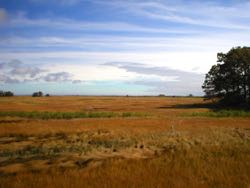 Looking at recent history, the researchers note that the feedbacks built into the dynamic models also help explain the observed stability of many salt marshes in the mid-Atlantic and elsewhere during recent decades, and the relative rarity of marshes that have already drowned. Where drowned marshes do occur — think the Mississippi delta or Venice lagoon — the culprit is a reduced sediment supply, due to dam or levee building, or increased subsidence due to groundwater withdrawal and other factors.
Looking at recent history, the researchers note that the feedbacks built into the dynamic models also help explain the observed stability of many salt marshes in the mid-Atlantic and elsewhere during recent decades, and the relative rarity of marshes that have already drowned. Where drowned marshes do occur — think the Mississippi delta or Venice lagoon — the culprit is a reduced sediment supply, due to dam or levee building, or increased subsidence due to groundwater withdrawal and other factors.
“Marshes fail to survive current rates of sea-level rise only where people have restricted sediment delivery or where the tidal range is very low,” says Kirwan.
The researchers temper their optimism regarding vertical marsh growth with a cautionary note about the importance of allowing salt marshes to migrate horizontally as rising seas push them landward. They note that in low-lying areas of the U.S. Atlantic Coast, migration into nearby forests could offset most of the loss of existing salt marshes.
But marsh migration isn’t possible where obstructed by coastal cliffs or human barriers. “Almost 20 percent of the Chesapeake Bay shoreline is hardened by riprap, seawalls and other structures,” says Kirwan, “and similar structures border almost all marsh areas in northwest Europe. We suggest that the availability of low-lying land for wetland migration is a first-order determinant of marsh fate.”














